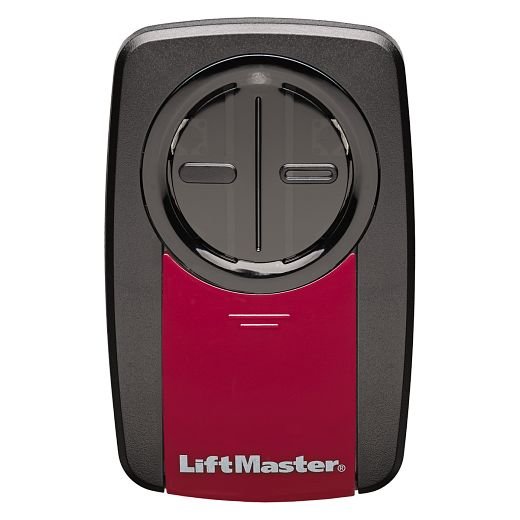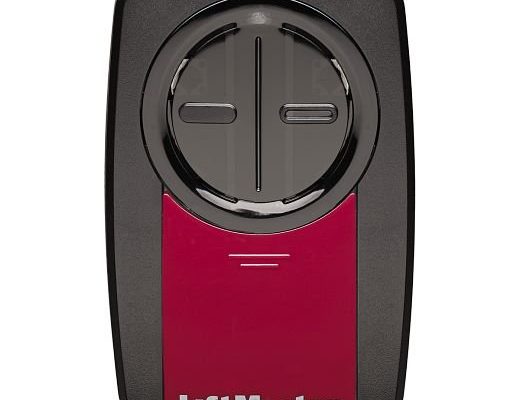
Think of your LiftMaster remote like a walkie-talkie for your garage—except you only get to say “Open Sesame.” Sometimes, though, it feels like your door isn’t listening until you’re right on top of it. Understanding what controls the actual range (and why it never seems to match the perfect-world numbers) can spare you a lot of trial and error—not to mention, save those extra steps on rainy days. So, let’s untangle the science and quirks behind how far your LiftMaster remote can really reach, and why it sometimes feels like magic… or just plain frustrating.
Typical Range of a LiftMaster Garage Remote
Here’s the thing: the average range for a LiftMaster garage remote usually falls between 100 to 150 feet in open space. On paper, that sounds pretty generous. In reality, it’s like those “up to” internet speed claims—technically possible, but only if you’re standing in a parking lot with zero obstacles.
Most LiftMaster remotes use rolling code technology (sometimes called Security+). That means they “talk” to the garage door opener on a specific frequency, and the code changes each time for safety. This doesn’t affect the *distance* so much, but it adds peace of mind knowing a neighbor can’t easily copy your code. If you’ve bought a newer model, you might notice the specs promise the higher end of that 100–150 ft range. Here’s the catch, though: real-world factors—like thick garage doors, nearby electronics, or even a metal SUV—can chop that distance in half without warning.
Don’t be too surprised if your actual LiftMaster remote range feels less impressive than you hoped. That’s completely normal, and not necessarily a sign your remote is faulty. Think of the rating as a “best case scenario,” not an everyday reality.
What Affects LiftMaster Remote Range?
Let me explain why that “up to” number never seems to pan out. Several things can shrink your remote’s range, and most of them are hiding in plain sight.
- Obstacles: Brick walls, metal doors, and even thick car panels can absorb or reflect the radio signal. It’s like yelling through a wall—your message just doesn’t make it all the way through.
- Battery Health: As your remote’s battery weakens, its signal gets softer too. A fresh battery can sometimes boost your range by 25% or more.
- Electronics Interference: Wi-Fi routers, LED lights, and even your neighbor’s baby monitor can muddy the airwaves. The more gadgets you have nearby, the tougher it gets for your remote’s little signal to fight through the noise.
- Weather: Heavy rain, snow, or even humid air can soak up some signal strength. You might notice worse performance on stormy days—no, you’re not imagining it.
Honestly, sometimes it feels like the universe itself is plotting against your effort to open the garage from the end of the driveway. But knowing what’s likely to cause hiccups is the first step to getting your range back.
How to Troubleshoot LiftMaster Remote Range Issues
You might be wondering why your remote only works from halfway up the driveway, even though it performed fine last month. Before you panic (or Google “garage door opener code reset” for the tenth time), try walking through a few troubleshooting basics.
First, swap out the battery. Even if your remote still works, a weak battery is often the silent culprit. Get a fresh CR2032 or whatever your model needs, and see if that solves the problem.
Next, clear any obvious obstructions. Parked cars—especially big, metallic SUVs—can block the signal. Move your vehicle out of the way, and test the remote again. Still no luck? Check your garage opener for nearby electronics. Even an added Wi-Fi camera or a new LED bulb can throw off the signal. Try turning those off temporarily to see if the range improves.
If these fixes fall flat, it’s time for a little code re-sync. Most LiftMaster models have a “learn” button (usually red or yellow) on the main opener unit. Press it, then immediately press the remote’s main button within 30 seconds. That’ll pair your remote again, which can sometimes resolve nagging range issues.
If none of this helps, your remote or opener might need repair. Sometimes, a tiny internal antenna gets bent or disconnected—something only a pro can safely fix.
Comparing LiftMaster Remote Range to Other Brands
LiftMaster is the 800-pound gorilla of garage door openers—they’re everywhere for a reason. But is their remote range any better or worse than, say, Chamberlain or Genie? The answer: not really, at least in terms of raw distance.
Most modern garage door remotes, whether they use rolling code tech or not, operate within that 100–150 ft sweet spot in open air. Security protocols and transmission frequencies are pretty standard across big brands. The main difference often comes down to build quality and interference resistance. Honest opinion? LiftMaster remotes are generally reliable, but if you’re living in a crowded area with lots of wireless devices, you’ll face the same interference headaches no matter what brand you use.
Universal remotes might seem tempting if you’re hoping for more range, but they usually match the original specs. If you want a serious bump in distance, you’d need to install a garage door opener with an external antenna (not typically found on standard units).
Tips for Maximizing Your LiftMaster Remote Range
Getting the most out of your remote isn’t usually about buying new gadgets—it’s about playing detective. Here are some ways you can squeeze extra distance out of your current setup:
- Use fresh batteries often. Don’t wait for your remote to die before replacing its power source.
- Angle matters. Hold the remote up and aim it directly at the opener. Sometimes, even a few degrees can make a difference.
- Move away from interference. Test your remote in different spots around your driveway to find the “sweet spot.”
- Keep the opener clear. Avoid piling up boxes, bikes, or anything metal around the opener unit.
- Consider relocating electronics. If you notice your range drops after installing new tech in your garage, try moving it further from the opener.
It’s not about having a superhero remote; it’s just about letting the tiny signal do its job without extra hurdles. Don’t be afraid to experiment a bit—the best range often comes from a little trial and error.
Remote Codes, Battery Life, and Security: What You Need to Know
Rolling code technology is LiftMaster’s way of making sure no one can grab your remote’s signal and re-use it. Each time you tap the button, both the remote and the opener switch to a new code—think of it as a secret handshake. This isn’t just about range, but it’s worth noting because pairing, resetting, or syncing your remote might be needed if your range suddenly tanks after a battery change.
While we’re talking batteries, remember: even if your remote lights up, a low battery can still weaken the radio blast. It’s similar to a flashlight that looks fine until you try shining it across the yard—you might not notice it’s dim until you really need it.
If you ever find yourself needing to reset or re-pair your remote, look for the “learn” button on your opener. Hold it for a few seconds, press your remote, and wait for confirmation (usually a light blink or beep). If you’re selling your home or worried about lost remotes, it’s smart to erase all codes and start over—security and range both benefit from a clean slate.
When to Replace or Upgrade Your LiftMaster Remote
After years of use (and countless door opens), every remote eventually hits retirement age. If you’re troubleshooting nonstop, constantly changing batteries, or seeing erratic performance even after re-syncing, it’s probably time for a replacement.
LiftMaster remotes are robust, but drops, water exposure, or internal wear can take their toll. Upgrading to a newer model can mean a slightly stronger signal, better interference resistance, and more reliable performance. Plus, new remotes often sync (or “pair”) much faster with the latest security protocols.
If you’re juggling multiple garages or want to control more than one opener, there are multi-button remotes that work with several devices at once. They won’t increase range, but can cut clutter and streamline your routine.
Alternatives to Standard LiftMaster Remotes
Sometimes, the stock remote just doesn’t cut it—especially if you live in a crowded apartment building or have a huge driveway. Here are a few alternatives if you need something different:
- Universal garage remotes: Many universal remotes work with LiftMaster and other big brands. They offer the same range as the original remote, but can sometimes be programmed to multiple doors.
- Smartphone control: Some LiftMaster openers support WiFi modules or MyQ technology, letting you open the door from your phone. There’s no range limit here—if you’ve got internet, you’ve got control.
- Keypads: Wall-mounted keypads next to the garage door bypass range issues entirely. Just punch in your code, and you’re in.
Each of these has its pros and cons, but none will magically boost your wireless remote range. They just offer more ways to access your garage, which can be a lifesaver when the remote is acting fussy.
Final Thoughts on LiftMaster Garage Remote Range
The range of a LiftMaster garage remote is about what you’d expect from any modern wireless device—solid on a good day, but full of “gotchas” the minute you add walls, cars, or electronics into the mix. Think of those 100–150 feet figures as “best case scenario,” not a promise. Keeping your remote healthy, clearing out obstacles, and knowing how (and when) to reset or re-sync it can make all the difference.
If your range falls short, don’t jump straight into buying a new unit. Most of the time, a quick battery swap or a little troubleshooting gets you back in business. And if you really crave effortless entry, exploring smart home upgrades might be worth it.
Garage doors are supposed to make life easier—not give you a workout. With a bit of know-how and a little patience, you’ll spend less time pushing buttons and more time getting on with your day.
